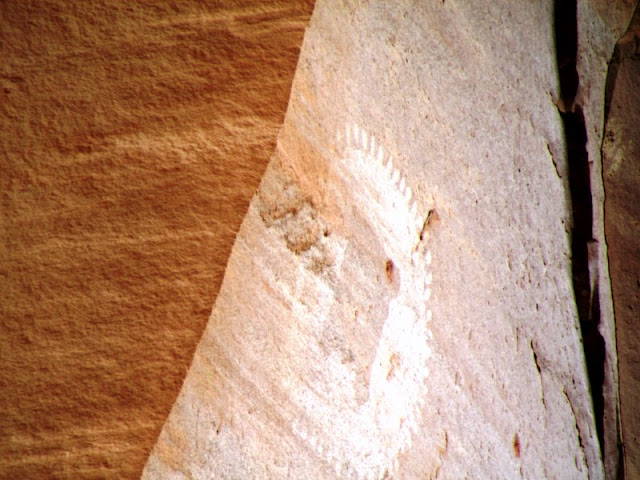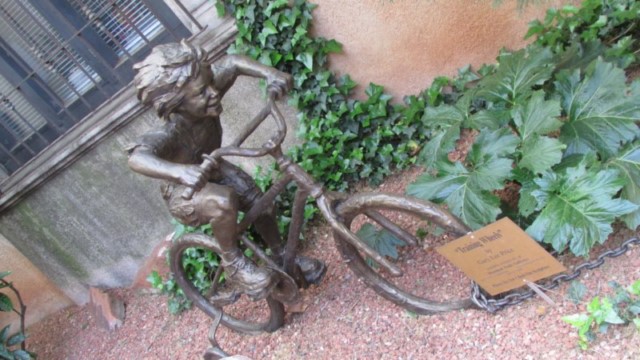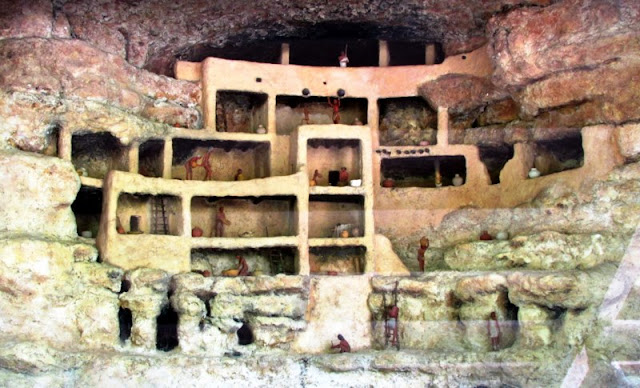Palatki Ruins is a designated World Heritage Site, and has cliff dwellings, pictographs and petroglyphs from the Southern Sinagua people. The ruins and dwellings were built by the ancient Sinagua Indians who inhabited the Sedona and Verde Valley area from 500 to about 1425 AD.
Palatki is the Hopi word for red house, I'm guessing that's from all the red rock into which the structures were carved.
You need reservations to tour the area with a Guide and I think there's a nominal fee, but our Golden Age Passes got us in free. Our guide was really interesting and gave us a lot of information about the area and the people who lived here.
This site has two distinct areas, first you tour the ruins with the guide, then you can do a self-tour over to the petroglyphs, which has a docent standing by to give out information and answer questions.
First photos are the ruins.
This area also had two designs carved on or bleached into the walls.
And the pictographs and petroglyphs from the second location:
Wikipedia's Palatki Heritage Site.
From Me and Katie, have a great day, everyone! 😎🔆😎

























































